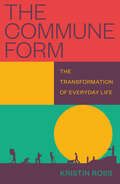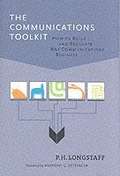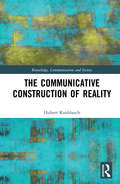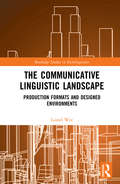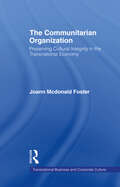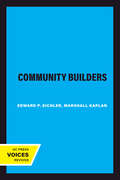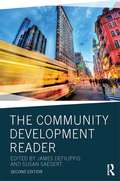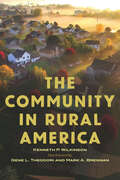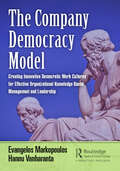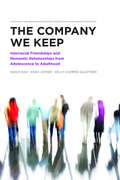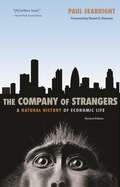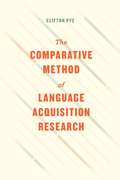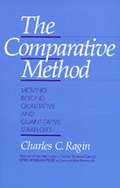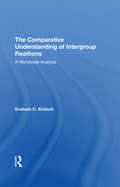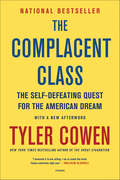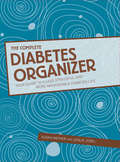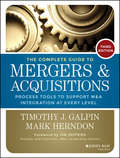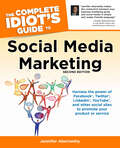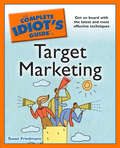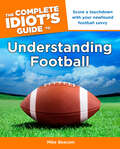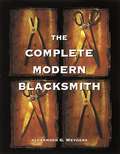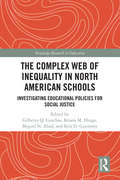- Table View
- List View
The Commune Form: The Transformation of Everyday Life
by Kristin RossA leading radical historian looks at the global resurgence of the commune and asks how they can become sites of liberationWhen the state recedes, the commune-form flourishes. This was as true in Paris in 1871 as it is now whenever ordinary people begin to manage their daily lives collectively.Contemporary struggles over land - from the zad at Notre-Dame-des-Landes to Cop City in Atlanta, from the pipeline battles in Canada to Soulèvements de la terre - have reinvented practices of appropriating lived space and time. This transforms dramatically our perception of the recent past.Rural struggles of the 1960s and 70s, like the "Nantes Commune," the Larzac, and Sanrizuka in Japan, appear now as the defining battles of our era. In the defense of threatened territories against all manners of privatization, hoarding, and infrastructures of disaster, new ways of producing and inhabiting are devised that side-step the state and that give rise to unprecedented kinds of solidarity built on pleasurable, fruitful collaborations.These are the crucial elements in the present-day reworking of an archaic form: the commune-form that Marx once called "the political form of social emancipation," and that Kropotkin deemed "the necessary setting for revolution and the means of bringing it about."
The Communications Toolkit: How to Build and Regulate Any Communications Business
by P. H. Longstaff Anthony OettingerThis book provides the tools necessary to build lasting, flexible strategies to survive and grow in these times of transition. Whether you are a business executive, lawmaker, policy analyst, industrialist, stock analyst, lawyer, or judge, these tools will help you to solve real problems right away.
The Communicative Construction of Reality (Knowledge, Communication and Society)
by Hubert KnoblauchThis volume advocates a shift from the social constructivism found in the work of Thomas Luckmann and Peter Berger, to a communicative constructivism that acknowledges communication as an embodied form of action in its own right, according to which social actors, in engaging in communicative action, construct a material social reality that guides, delimits, and enables actions. A study of the importance of understanding the role of communication in an age in which digitization and mediatization have extended the reach of communication to a global level and brought about the emergence of the communication society, The Communicative Construction of Reality shows how communication society does not merely replace modern society and its hierarchical institutions, but complements it in a manner that continually results in conflicts leading to the refiguration of society. As such, it will appeal to scholars of sociology with interests in the sociology of knowledge, communication, and social theory.
The Communicative Linguistic Landscape: Production Formats and Designed Environments (Routledge Studies in Sociolinguistics)
by Lionel WeeHow exactly do linguistic landscapes communicate and what theoretical significance might follow from such an inquiry? This book addresses these questions by taking as its starting point the insight that the individual or organisation that is responsible for the production of a sign may not be physically present at the landscape itself. The information to be conveyed is typically designed as a piece of signage to be emplaced at the site. Drawing on Goffman’s notion of a production format, the book argues that the constructed piece of sign and its intended placement within the landscape combine to constitute an animator complex. This raises the possibility of a disruption to the sign and its placement in the landscape. The book describes various ways in which the integrity of the animator complex can be disrupted (e.g. the sign may be moved out of place through vandalism or acts of nature, or the organisation that the sign represents may no longer be in business), identifies different types of animators, and expands on the implications for phenomena such as affect, multivocality, footing and the materiality of language. In doing so, the book also demonstrates the value of bringing in Bakhtin’s work on heteroglossia and the dialogicity of communication, integrating the ideas of Bakhtin with those of Goffman.
The Communitarian Organization: Preserving Cultural Integrity in the Transnational Economy (Transnational Business and Corporate Culture)
by JoAnn M. FosterFirst Published in 1999. Routledge is an imprint of Taylor & Francis, an informa company.
The Community Builders (California Studies in Urbanization and Environmental Design #1)
by Marshall Kaplan Edward P. EichlerExamines methods of new town developers in land acquisition, financing, taxation, relationships with governmental authorities, etc. with extensive reference to planned communities in California.
The Community Development Reader
by Susan Saegert James DefilippisThe Community Development Reader is the first comprehensive reader in the past thirty years that brings together practice, theory and critique concerning communities as sites of social change. With chapters written by some of the leading scholars and practitioners in the field, the book presents a diverse set of perspectives on community development. These selections inform the reader about established and emerging community development institutions and practices as well as the main debates in the field. The second edition is significantly updated and expanded to include a section on globalization as well as new chapters on the foreclosure crisis, and emerging forms of community .
The Community in Rural America (Society and Natural Resources Book Series)
by Kenneth P. WilkinsonThe Community in Rural America, by Kenneth P. Wilkinson, is a foundational theoretical work that both defines the interactional approach to the study of the community in rural areas and frames its application to encourage and promote rural community development. Recognized for its detailed theoretical construction and logic for understanding human interactions, this book has been widely adopted and used by researchers, extension faculty, and community development practitioners for over thirty years. Presenting Wilkinson’s groundbreaking work in its original form, with a new foreword aimed at clarifying several key concepts in interactional theory, this edition of The Community in Rural America will appeal to new students of the community as well as established scholars in the field.
The Company Democracy Model: Creating Innovative Democratic Work Cultures for Effective Organizational Knowledge-Based Management and Leadership (Engineering Management)
by Evangelos Markopoulos Hannu VanharantaCompany democracy is often misunderstood in the business context as democracy is usually related to politics. In this book, the authors present a different dimension. They focus first on democracy from an organizational culture perspective and then offer employees opportunities to understand and apply democracy from the company floor level. The Company Democracy Model (CDM) is an industry-wide, practical methodology for knowledge management utilization under applied philosophical thinking. The model progresses through a framework in which an organizational evolutionary spiral method empowers the creation of knowledge-based democratic cultures for wise and effective strategic management and leadership. This new innovative methodology, supported with techniques and processes, can gain/create many ideas, insights, innovations, new products, and services that can benefit a company. One purpose of using the model is to create a robust conceptual framework as a theoretical basis for a business strategy that promotes sustainable, continuous, and democratic development. Another purpose is to emphasize the importance of intellectual capital and compare capital-related and human-related business issues in shaping a company’s competitiveness, profitability, productivity, performance, and shared value. A third purpose is to use its symbolic infrastructure that builds solid democratic systems for viable business development and management. Finally, the described purposes give the reader new ideas to change and improve the design of business activities in a collective and modern democratic way.
The Company We Keep: Interracial Friendships and Romantic Relationships from Adolescence to Adulthood (American Sociological Association's Rose Series)
by Grace Kao Kara Joyner Kelly Stamper BalistreriWith hate crimes on the rise and social movements like Black Lives Matter bringing increased attention to the issue of police brutality, the American public continues to be divided by issues of race. How do adolescents and young adults form friendships and romantic relationships that bridge the racial divide? In The Company We Keep, sociologists Grace Kao, Kara Joyner, and Kelly Stamper Balistreri examine how race, gender, socioeconomic status, and other factors affect the formation of interracial friendships and romantic relationships among youth. They highlight two factors that increase the likelihood of interracial romantic relationships in young adulthood: attending a diverse school and having an interracial friendship or romance in adolescence. While research on interracial social ties has often focused on whites and blacks, Hispanics are the largest minority group and Asian Americans are the fastest growing racial group in the United States. The Company We Keep examines friendships and romantic relationships among blacks, whites, Hispanics, and Asian Americans to better understand the full spectrum of contemporary race relations. Using data from the National Longitudinal Study of Adolescent to Adult Health, the authors explore the social ties of more than 15,000 individuals from their first survey responses as middle and high school students in the mid-1990s through young adulthood nearly fifteen years later. They find that while approval for interracial marriages has increased and is nearly universal among young people, interracial friendships and romantic relationships remain relatively rare, especially for whites and blacks. Black women are particularly disadvantaged in forming interracial romantic relationships, while Asian men are disadvantaged in the formation of any romantic relationships, both as adolescents and as young adults. They also find that people in same-sex romantic relationships are more likely to have partners from a different racial group than are people in different-sex relationships. The authors pay close attention to how the formation of interracial friendships and romantic relationships depends on opportunities for interracial contact. They find that the number of students choosing different-race friends and romantic partners is greater in schools that are more racially diverse, indicating that school segregation has a profound impact on young people’s social ties. Kao, Joyner, and Balistreri analyze the ways school diversity and adolescent interracial contact intersect to lay the groundwork for interracial relationships in young adulthood. The Company We Keep provides compelling insights and hope for the future of living and loving across racial divides.
The Company of Strangers: A Natural History of Economic Life - Revised Edition
by Paul SeabrightThe Company of Strangers shows us the remarkable strangeness, and fragility, of our everyday lives. This completely revised and updated edition includes a new chapter analyzing how the rise and fall of social trust explain the unsustainable boom in the global economy over the past decade and the financial crisis that succeeded it. Drawing on insights from biology, anthropology, history, psychology, and literature, Paul Seabright explores how our evolved ability of abstract reasoning has allowed institutions like money, markets, cities, and the banking system to provide the foundations of social trust that we need in our everyday lives. Even the simple acts of buying food and clothing depend on an astonishing web of interaction that spans the globe. How did humans develop the ability to trust total strangers with providing our most basic needs?
The Comparative Method of Language Acquisition Research
by Clifton PyeThe Mayan family of languages is ancient and unique. With their distinctive relational nouns, positionals, and complex grammatical voices, they are quite alien to English and have never been shown to be genetically related to other New World tongues. These qualities, Clifton Pye shows, afford a particular opportunity for linguistic insight. Both an overview of lessons Pye has gleaned from more than thirty years of studying how children learn Mayan languages as well as a strong case for a novel method of researching crosslinguistic language acquisition more broadly, this book demonstrates the value of a close, granular analysis of a small language lineage for untangling the complexities of first language acquisition. Pye here applies the comparative method to three Mayan languages—K’iche’, Mam, and Ch’ol—showing how differences in the use of verbs are connected to differences in the subject markers and pronouns used by children and adults. His holistic approach allows him to observe how small differences between the languages lead to significant differences in the structure of the children’s lexicon and grammar, and to learn why that is so. More than this, he expects that such careful scrutiny of related languages’ variable solutions to specific problems will yield new insights into how children acquire complex grammars. Studying such an array of related languages, he argues, is a necessary condition for understanding how any particular language is used; studying languages in isolation, comparing them only to one’s native tongue, is merely collecting linguistic curiosities.
The Comparative Method: Moving Beyond Qualitative and Quantitative Strategies
by Charles C. RaginProfessor Ragin proposes a synthetic new strategy, based on an application of Boolean algebra, that will combine the strengths of both qualitative and quantitative sociology. Elegantly accessible and germane to the work of all the social sciences, this book will garner interest, debate, and praise from many quarters.
The Comparative Understanding Of Intergroup Relations: A Worldwide Analysis
by Graham KinlochThis book deals with major types of intergroup relations, the advantages and limitations of the comparative approach, and comparative views of intergroup relations. It examines these relations particularly within the US, highlighting different types of contact and consequences within the society.
The Complacent Class: The Self-Defeating Quest for the American Dream
by Tyler CowenA Wall Street Journal and Washington Post Bestseller"Tyler Cowen's blog, Marginal Revolution, is the first thing I read every morning. And his brilliant new book, The Complacent Class, has been on my nightstand after I devoured it in one sitting. I am at round-the-clock Cowen saturation right now."--Malcolm Gladwell Since Alexis de Tocqueville, restlessness has been accepted as a signature American trait. Our willingness to move, take risks, and adapt to change have produced a dynamic economy and a tradition of innovation from Ben Franklin to Steve Jobs.The problem, according to legendary blogger, economist and best selling author Tyler Cowen, is that Americans today have broken from this tradition—we’re working harder than ever to avoid change. We're moving residences less, marrying people more like ourselves and choosing our music and our mates based on algorithms that wall us off from anything that might be too new or too different. Match.com matches us in love. Spotify and Pandora match us in music. Facebook matches us to just about everything else.Of course, this “matching culture” brings tremendous positives: music we like, partners who make us happy, neighbors who want the same things. We’re more comfortable. But, according to Cowen, there are significant collateral downsides attending this comfort, among them heightened inequality and segregation and decreased incentives to innovate and create.The Complacent Class argues that this cannot go on forever. We are postponing change, due to our near-sightedness and extreme desire for comfort, but ultimately this will make change, when it comes, harder. The forces unleashed by the Great Stagnation will eventually lead to a major fiscal and budgetary crisis: impossibly expensive rentals for our most attractive cities, worsening of residential segregation, and a decline in our work ethic. The only way to avoid this difficult future is for Americans to force themselves out of their comfortable slumber—to embrace their restless tradition again.
The Complete Diabetes Organizer
by Leslie Josel Susan WeinerIs your lack of organization impacting your ability to effectively manage your diabetes? Do you run out of supplies and forget endocrinologist appointments? Do you find snacks in your pantry that expired sometime before the insulin pump was invented? Do you struggle to keep track of health-care invoices and payments? Do you succeed at keeping an active health journal for a week or two and then neglect it for a year or two?It sounds like you could use The Complete Diabetes Organizer!Within the pages of this book, diabetes educator Susan Weiner and organizing guru Leslie Josel provide you with dependable strategies and ideas designed to help streamline your diabetes care and simplify your life. From her distinguished career and experience in the fields of diabetes and dietetics, Susan Weiner brings helpful tips and tricks that are guaranteed to ease daily mechanics, promote improved nutrition, and relieve stress caused by disorder and confusion. Certified professional organizer and ADHD Specialist Leslie Josel applies her expertise to the topic of diabetes, with simple, surefire techniques that will allow you to disentangle yourself from the clutches of chronic disorganization.The Complete Diabetes Organizer is your guidebook to maintaining your diabetes with less effort and more confidence, allowing you to focus on enjoying a healthier, stress-free life.
The Complete Diabetes Organizer
by Leslie Josel Susan WeinerIs your lack of organization impacting your ability to effectively manage your diabetes? Do you run out of supplies and forget endocrinologist appointments? Do you find snacks in your pantry that expired sometime before the insulin pump was invented? Do you struggle to keep track of health-care invoices and payments? Do you succeed at keeping an active health journal for a week or two and then neglect it for a year or two?It sounds like you could use The Complete Diabetes Organizer!Within the pages of this book, diabetes educator Susan Weiner and organizing guru Leslie Josel provide you with dependable strategies and ideas designed to help streamline your diabetes care and simplify your life. From her distinguished career and experience in the fields of diabetes and dietetics, Susan Weiner brings helpful tips and tricks that are guaranteed to ease daily mechanics, promote improved nutrition, and relieve stress caused by disorder and confusion. Certified professional organizer and ADHD Specialist Leslie Josel applies her expertise to the topic of diabetes, with simple, surefire techniques that will allow you to disentangle yourself from the clutches of chronic disorganization.The Complete Diabetes Organizer is your guidebook to maintaining your diabetes with less effort and more confidence, allowing you to focus on enjoying a healthier, stress-free life.
The Complete Guide to Mergers and Acquisitions
by Timothy J. GalpinEase the M&A process with a more effective integrationplan The Complete Guide to Mergers and Acquisitions is theultimate handbook for planning and managing post-mergerintegration. Packed full of "how to" guidance, tools, templates andresources that have been put to the test on numerous due diligenceand integration efforts around the world, The Complete Guide toMergers and Acquisitions has been the go-to guide for firmsseeking to maximize the value of their deals since the release ofthe first edition in 1999.Poor integration management virtually ensures that a merger oracquisition will fail to meet financial and strategic goals. TheComplete Guide to Mergers and Acquisitions provides theinformation that enables firms to quickly and prudently captureprojected cost and revenue synergies, and to move the combinedorganization forward. The book addresses strategic dealconsiderations, due diligence, integration management, peopledynamics and cultural integration, common integration mistakes,communications strategies, and provides actionable steps towardcreating measurable, positive results throughout the integrationprocess. The updated third edition contains new information andtools to help firms in any industry manage deals of all sizes,including:Results of The State of M&A Integration EffectivenessSurvey, 2014A new chapter on the M&A process deal stages, with anexpanded Deal Flow ModelFindings of substantial M&A research from various studiesin multiple industries and organizations, supporting the conceptspresented throughout the bookNew and revised tools and templates for due diligence,integration, and results measurement and reportingNew case examples of recent transactionsHighlighted 'Key Principles' throughout each chapterA summary of key points at the end of each chapterDiscussion questions addressing the key themes of eachchapterA 'rapid assessment' diagnostic regarding the key elements ofeach chapter, which can be completed for any organizationA revised chapter on taking your M&A game to the next level- essential requirements for building M&A capabilitiesinto a consistently successful enterprise competencyMerger and acquisition activity across the globe continues togrow, and is also playing a major role in the development ofexpanding markets. A well-managed integration effort is essentialto success, and failure means a tremendous waste in terms of timeand money, as well as the rapid destruction of shareholder value.The Complete Guide to Mergers and Acquisitions: Process Tools toSupport M&A Integration at Every Level, Third Edition is aninvaluable resource to guide firms in managing M&A integrationand maximize the value of their deals.
The Complete Idiot's Guide to Great Customer Service
by Ron KarrYou're no idiot, of course. You skillfully manage your kids' temper tantrums, diplomatically handle office politics, and even pleasantly deal with your friends' bickering. But when it comes to handling customer service, you feel utterly lost. It's time to make great customer service an indispensable part of your daily operation! The Complete Idiot's Guide® to Great Customer Service teaches you how to create the "Service Difference"—service that genuinely pleases your customers and sets your organization apart from the pack.
The Complete Idiot's Guide to Social Media Marketing, 2nd Edition
by Jennifer AbernethyThe Complete Idiot's Guide® to Social Media Marketing, Second Edition, covers cutting-edge techniques for small and large businesses alike. Ask the AuthorQ: How has social media marketing changed business and personal lives?A: The playing field has been leveled for business. No longer do you need a 6 or 7 figure budget to reach people around the country or globe for that matter. Personally, many lives have been affected. Many people more connected, businesses have grown because of the connections, TV and singing careers have been launched, money has been raised for charity, books have been marketed and purchased, and so on.Q: What has been the most challenging part of utilizing social media?A: I think the learning curve. With all of these sites . . . they come with no directions and no LIVE phone number.Q: What has worked the best and worst thus far?A: Facebook because of it&’s broad reach really has worked for me, but many would argue that YouTube works the best; particularly since it is the search engine of choice with the 11–34 age group.Q: How can a person searching for a job use social media marketing?A: So many ways. . . . They need to be on LinkedIn with a professional looking profile, photo, and contact information. They could also utilize video to begin sharing their expertise. Candidates need to stand out in a crowd of millions so if they say . . . sent in a video introducing themselves and a video follow up email . . . that would wow them!Q: What is the newest thing since Twitter?A: I believe companies and individuals are starting to utilize audio for creating their own iTunes channel, and also location-based social media like FourSquare. I personally, am not sold on location based services as of yet from a safety point of view, but for retailers it can be a good thing. I believe video is going to explode in popularity in 2011 for the 35+ market as well. They just need to get comfortable being on camera!
The Complete Idiot's Guide to Strategic Planning: Boost Your Business with Proven Strategies
by Lin Grensing-PophalGet ahead of the competition with some expert planning As any business manager knows, success doesn't just happen. It takes hard work and planning to get the desired results. Strategic planning is the discipline that helps businesses build on their present success by analyzing all the factors that can impact the future and take measures to anticipate them. The Complete Idiot's Guide® to Strategic Planning offers clear and concrete discussions about: • Defining business goals in mission statements • Proven methods to gather the information necessary to formulate a strategy • Anticipating the competition • Executing a strategic plan
The Complete Idiot's Guide to Target Marketing: Get on Board with the Latest and Most Effective Techniques
by Susan FriedmannTwenty-first century tools and tactics to get the word out You want to get the word out to buyers about all the great things your business has to offer. Too bad a big-bucks marketing campaign just isn't in your budget right now. The Complete Idiot's Guide® to Target Marketing is full of clever, practical, and easy-to-use strategies to help you get your message out to the right people, at the right time, and in the right place. You'll learn: • Five easy steps to identify the most lucrative niche markets • Tech-savvy tips on using online surveys and other e-tools to identify your customers' needs • Powerful pointers on viral marketing, blogging, webinars, and other web marketing ideas • Highly-effective and low-budget advertising strategies and customer retention techniques
The Complete Idiot's Guide to Understanding Football: Score a Touchdown with Your Newfound Football Savvy
by Mike BeacomDon't feel left out in the roar of the crowd Football is the most popular sport in America today. It's also the most complicated, especially to those who watch their loved ones hibernate in football heaven from September to February. Here's the book that levels the playing field for novices, giving them a simple, clear, and comprehensive guide worthy of a Lombardi Trophy. Finally, get in the game with: • Basic rules and objectives • Player position, strategies, formations, and plays • The business of football • Differences between high school, college, and pro football • Fantasy football
The Complete Modern Blacksmith
by Alexander WeygersA truly unusual and unique resource, this extremely hands-on book brings together three popular but long-out-of-print classics (THE MODERN BLACKSMITH; THE RECYCLING, USE, AND REPAIR OF TOOLS; and THE MAKING OF TOOLS) essential for anyone interested in the making, repair, maintenance, or arcana of tools. An essential volume in any serious craftperson's library, this book covers setting up a smithy (anvil, forge, hammer, tongs, and all), and manufacturing everything from stone-carving chisels to decorative wall hooks.From the Trade Paperback edition.
The Complex Web of Inequality in North American Schools: Investigating Educational Policies for Social Justice (Routledge Research in Education)
by Gilberto Q. Conchas Briana M. Hinga Miguel N. Abad Kris D. GutiérrezThe Complex Web of Inequality in North American Schools analyzes and challenges the critical gaps and inequalities that persist in the American school system. Showing how historical biases have been inherited in current polices relating to non-dominant youth, the text calls for educational reforms that perform in the name of social justice. This edited collection carefully interrogates how technocratic educational policies and reforms are often unequipped to address the interplay of political, social, economic, ideological factors that are at the roots of educational injustice. Considering the most vulnerable student populations, original case studies explore how inadequate structures, practices, and beliefs have increased marginalization, and highlight those instances in which policy has proved effective in reducing opportunity gaps between economically rich and poor students; between white, Asian, Black and Latino youth; between native English speakers and second language learners; highlighting racial integration and unequal American Indian education; and for students with special educational needs. The insights into such policies shed light on the complex web of historically embedded inequities that continue to shape the construction, roll-out, and consequences of education policy for the most marginalized youth populations today. This volume will be of interest to graduate, and postgraduate students, researchers and academics in the fields of education policy, sociology of education, economics of education, and history of education, and well as policy evaluation.
